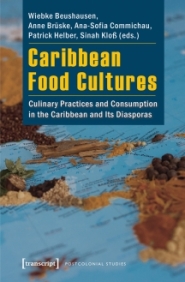Allegorical embodiments of political order in Great Britain and the Holy Roman Empire
Since ancient times, personifications, images of animals, and other allegories had symbolized entities of ‚state’. In Early Modern times there was a growing number of attempts to describe and depict the state in the form of a body. A comparison of Great Britain and the Holy Roman(-German) Empire in the Early Modern period shows interesting similarities in the respective realization of such allegories as well as very distinctive and specific features. By means of a comparative, ‘transcultural’ perspective on these ‘national’ symbols the respective artistic, political and theoretical principles of and conditions for the emergence and spreading of these embodiments can be determined more precisely. Only in comparison can the full message of these complex allegories be grasped. Within a context of ‘contrary’ political developments (centralisation vs. differentiation), a comparing view on constitutional history and symbolic imagery in Great Britain and in the Holy Roman Empire poses questions on possible discourses on interrelations between configurations of political order, ‘national’ identities, and an expanding language of imagery.
Personal details
Michael Mohr
CV
2001-2008
Studies in History and English Language and Literature at the Universities of Heidelberg and Southampton (2003/04)
Graduation with degree Erstes Staatsexamen (graduation thesis: “Coronations in Early Modern Europe: Reflections on the staging of political-confessional configurations of order”)
December 2008 - October 2011
Research Assistant within the Transcultural Studies project “Prinzip ‚Personifikation’: Visuelle Intelligenz und epistemische Tradition, 1300-1800 (“'The Principle of Personification': Visual intelligence and epistemic tradition, 1300-1800”) at the University of Heidelberg.
1 July - 30 September 2010
Fellow of the German Historical Institute London.
Research interests
European history of the Middle Ages and the Early Modern period (esp. Holy Roman Empire, England/Great Britain), Symbolic Communication (Representation of rulership, coronations, allegoric embodiments of the state, personifications).
Publication
- ‚Transkulturelle’ Repräsentationen ‚transnationaler’ und ‚transstaatlicher’ Verfassungsentwicklungen? Ein Versuch, Ordnung in den (Be)Griff zu bekommen, in: Melanie Hühn / Dörte Lerp / Knut Petzold / Miriam Stock (Hg.), Transkulturalität, Transnationalität, Transstaatlichkeit, Translokalität. Theoretische und empirische Begriffsbestimmungen (Region - Nation - Europa 62), Berlin/Münster/Wien/Zürich/London: LIT Verlag, 2010, S.149-169.
- Together with Christiane Brosius, Barbara Mittler, Thomas Maissen, Sumathi Ramaswamy, Cathrine Bublatzky, Sebastian Gehrig, Matthias Arnold, Erik Decker, Maren Härtel: Online Exhibition "Archiving Mothers and Fathers of the Nation", 2008. https://kjc-ws2.kjc.uni-heidelberg.de/research/heidelberg-research-architecture/hra-projects-1/archiving-mothers-and-fathers-of-the-nation/archiving-mothers-and-fathers-of-the-nation/document_view (login required)
Talks/Presentations
- „Staatsrepräsentation(en)“ („Representation(s) of the state“); seminar „Der frühneuzeitliche Staat“ (“The early modern state“), headed by Prof Dr Thomas Maissen, Department of History, Heidelberg University, 21/10/2010
- „Allegorische Verkörperungen politischer Ordnung in Großbritannien und im Heiligen Römischen Reich Deutscher Nation“ (“Allegorical embodiments of political order in Great Britain and the Holy Roman Empire“); colloquium of the German Historical Institute London, 14/9/2010
- „Allegorische Verkörperungen politischer Ordnung in Großbritannien und im Heiligen Römischen Reich Deutscher Nation“ (“Allegorical embodiments of political order in Great Britain and the Holy Roman Empire”); colloquium of the Chair for Early Modern History, headed by Prof Dr. Sven Externbrink, Department of History, Heidelberg University, 25/6/2010
- „Transnationale und transstaatliche Verfassungsentwicklungen und ihre transkulturellen Repräsentationen“ (“Transnational and transimperial constitutional developments and their transcultural representations“) ; conference “Transkulturalität – Transnationalität – Transstaatlichkeit – Translokalität. Theoretische und empirische Begriffsbestimmungen“, Europa-Universität Viadrina Frankfurt (Oder), 1-3/10/2009
- „Allegorische Verkörperungen politischer Ordnung – Das Beispiel der weiblichen Staatspersonifikation“ (“Allegorical embodiments of political order – the example of the female personfication of the state“); seminar “Der weibliche Körper in allegorischen Projektionen: Vom Rosenroman zur Lady Liberty“ (“The female body in allegorical projections: from Roman de la Rose to Lady Liberty“), headed by Dr Cornelia Logemann, Institute of European Art History, Heidelberg University, 10/6/2009












